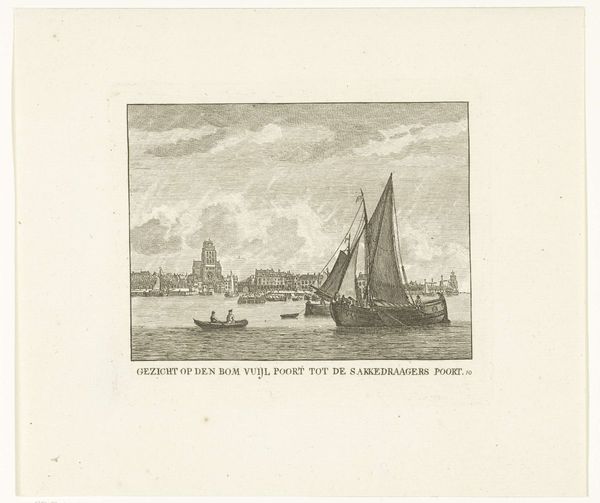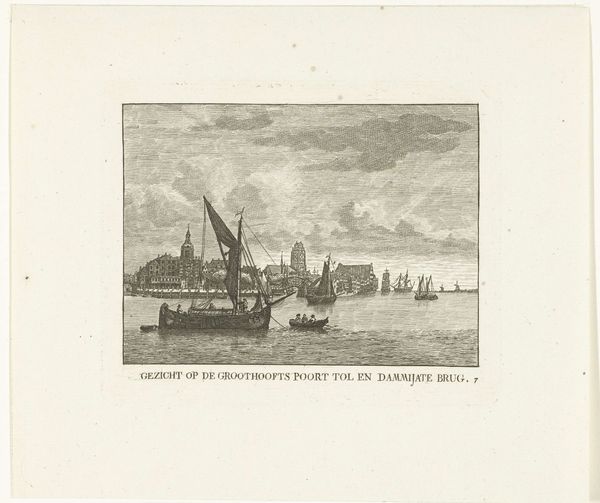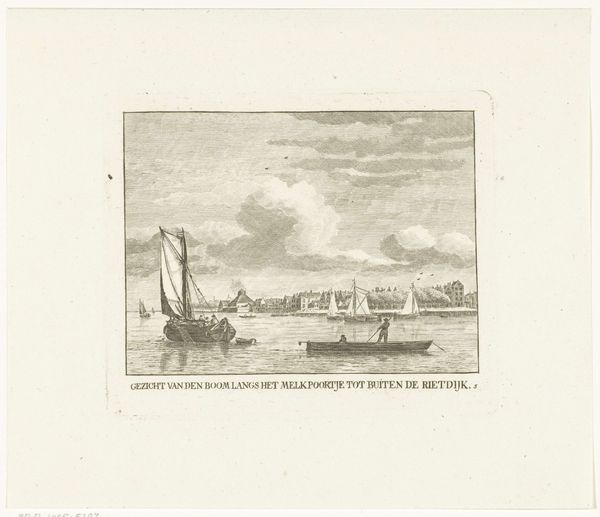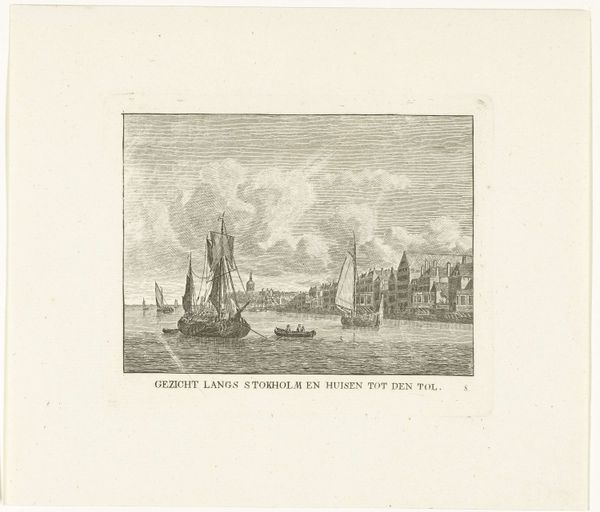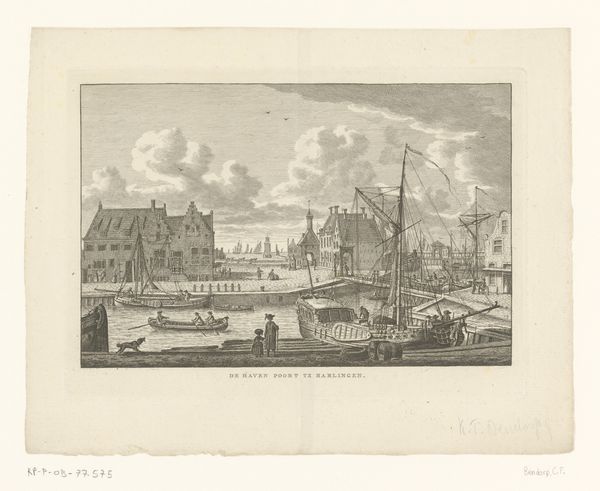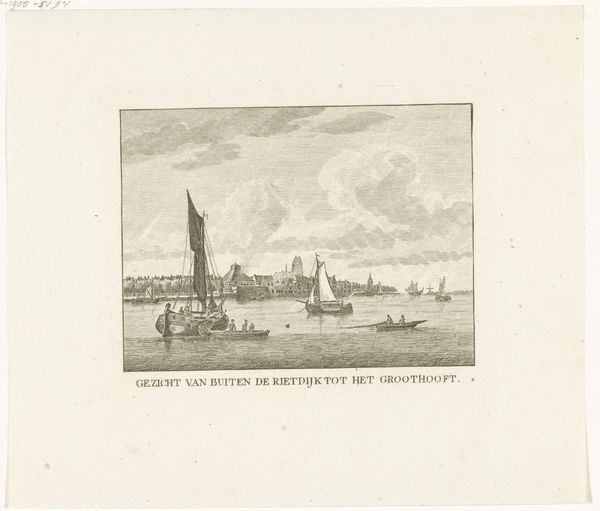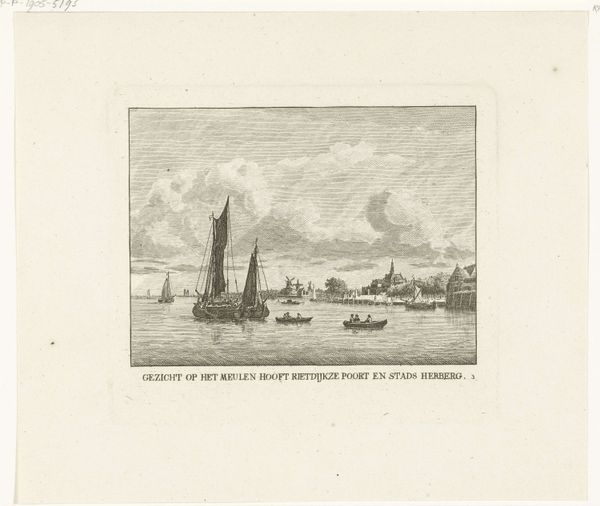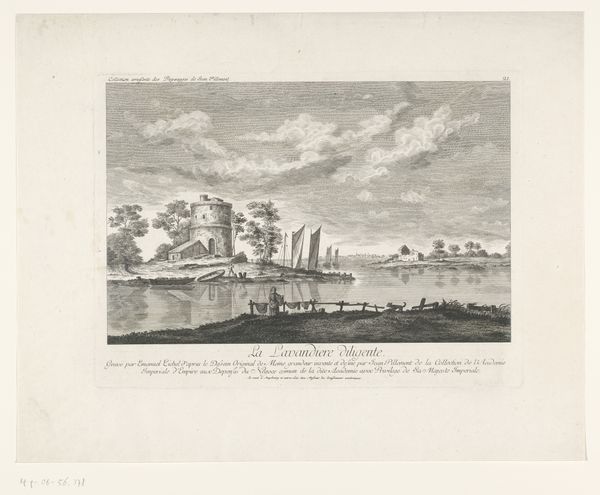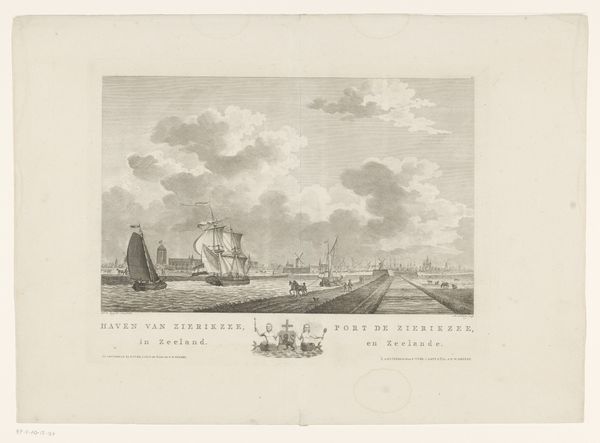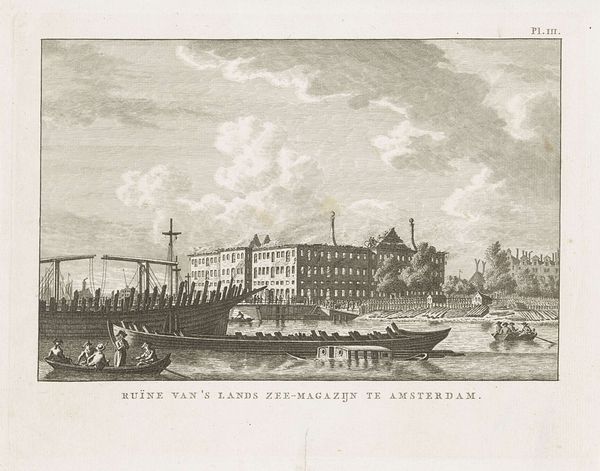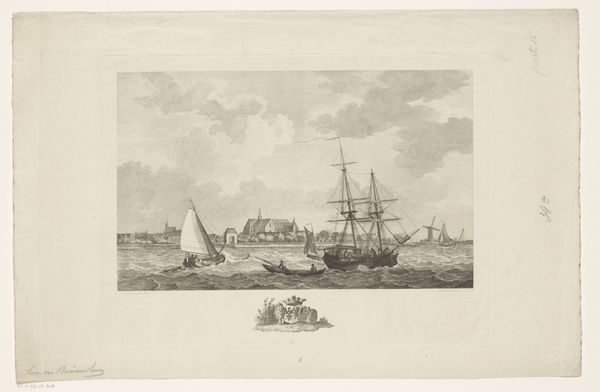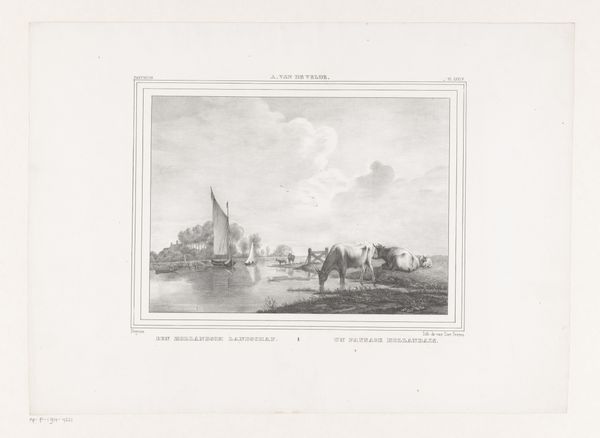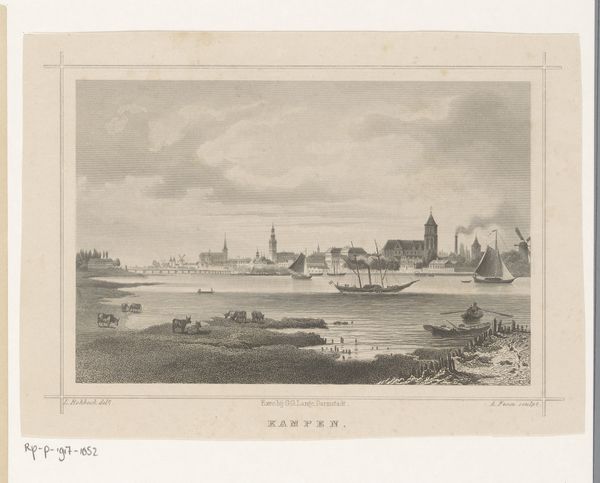
Gezicht vanaf Merwede op Blauwpoort en Catharijnepoort te Dordrecht 1803
0:00
0:00
print, engraving
#
neoclacissism
# print
#
old engraving style
#
landscape
#
cityscape
#
engraving
Dimensions: height 117 mm, width 142 mm
Copyright: Rijks Museum: Open Domain
Art Historian: We're looking at "View from the Merwede on Blauwpoort and Catharijnepoort in Dordrecht," an engraving crafted in 1803 by Carel Frederik Bendorp I. It resides in the Rijksmuseum collection. Curator: It feels incredibly…composed. Rigid, even. The detail is impressive for an engraving, but it's a very sanitized view of city life. Almost…propaganda-esque in its presentation of order. Art Historian: It speaks of Neoclassical ideals, that yearning for order and harmony. Look how Bendorp emphasizes clarity, even in depicting the architecture. The waterways and structures become symbols of an idealized society, perhaps a vision of Dutch power and trade during the period. Curator: But who benefits from this "order?" These idealized cityscapes often mask the realities of social hierarchy and economic disparity. Were these gates equally accessible to everyone, or did they reinforce existing power structures? Art Historian: I see them also as markers, almost like symbolic portals. The gates represent points of transition, both physical and perhaps spiritual. Cities, in many cultures, are depicted as centers of both worldly and spiritual affairs, as connection hubs of earthly and divine matters. Curator: Maybe. Or they are merely physical checkpoints enforcing trade routes and tax collection, neatly visualized through a dominant architectural gaze that highlights economic control and societal structure. What’s rendered is who's permitted entry, both literally and metaphorically. Art Historian: And perhaps a memory of Roman times. The clear perspective and attention to detail reflect a yearning for those past glories in Dutch consciousness. Those details carry weight across time. The water, too. Water is frequently linked to the subconscious. Do we notice an invitation to reflect on our connection with the depicted city? Curator: I think it also speaks volumes about the function of art during the early 19th century – its role in shaping a narrative that privileges the ruling class. Who commissioned and consumed these city views and to what sociopolitical end? That's what intrigues me more. Art Historian: Fair. The image acts as a symbolic language—communicating aspirations for an organized world through the iconic towers, and clear, rational architectural elements. It remains a compelling intersection of image and thought. Curator: Absolutely, it forces us to engage with history's complex visual and power dynamics and its present cultural legacies. The image prompts essential conversations.
Comments
No comments
Be the first to comment and join the conversation on the ultimate creative platform.
